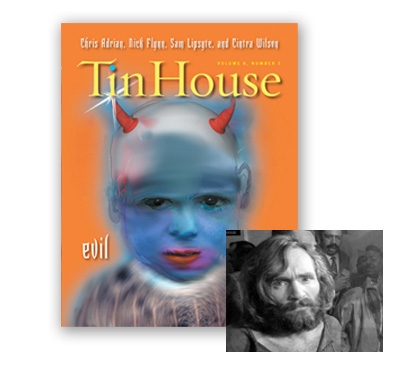|
Copyright © 2008
|
 |
by Win McCormack She could have been a stone-cold killer
A house on Romero Canyon Road, in the Montecito section of Santa Barbara, California, the evening of Saturday, August 9, 1969. There were five of us present: four of us—myself, Richard, Jan, and Ruth (my girlfriend that summer)—were Junior Fellows at the Center for the Study of Democratic Institutions in Santa Barbara, and there was Jan’s wife, Barbara. We were all in our early to mid-twenties. As dusk fell over the eucalyptus and lemon trees surrounding the house, we dropped acid. As it turned out, this was not the right night for this group of people to do that. All afternoon the news had been filled with reports of a grisly and bizarre quintuple murder that had taken place after midnight in a mansion at 10050 Cielo Drive off Benedict Canyon in Bel-Air, an exclusive residential area of Los Angeles about eighty-five miles southeast of Santa Barbara. The mansion was the residence at that time of director Roman Polanski and his wife, actress Sharon Tate. When the police arrived that morning, they found, in the living room of the mansion, the bodies of Tate and Jay Sebring, an internationally known hair designer who was Tate’s former lover and now a friend to both her and Polański, and on the front lawn the bodies of Abigail Folger, a Folger-coffee heiress, and her lover, Wojciech Frykowski, a playboy and friend of Polański from his filmmaking days in Poland. Two of these victims—Sebring and Frykowski—had been shot. All four of them had been stabbed multiple times. Frykowski had also been struck on the head with a blunt instrument. The police found another victim as well, a young man named Steven Parent, who had been visiting the grounds caretaker in his nearby cottage, slumped over the wheel of a car near the gate to the property. He had been shot four times. Someone had climbed the telephone pole, with a pair of wire clippers, and cut all four telephone wires to the house. On the front door the word PIG was written in blood that, after analysis, proved to be Sharon Tate’s. Blood was everywhere—throughout the house, on the front porch, on the lawn. Witnesses described the sanguinary scene as a “battlefield” and a “human slaughterhouse.” Since it was the midst of summer, it did not get dark until fairly late that night of August 9. By the time darkness had consumed the house on Romero Canyon Road, Richard, Jan, Barbara, Ruth, and I were fairly well stoned. Suddenly Jan, a philosophy graduate of Reed College with a strong penchant for getting caught up in twisted and protracted flights of fancy, started talking about the murders in Bel-Air. He alluded to some of the details of the murder scene and to the names of some of the victims. Then he said that even as we sat there, the murderers could be in our vicinity; in fact, they could be right outside the house at that very moment. He emphasized the fact that the murders the night before had taken place in a canyon, and we were in a canyon, and the two canyons were not that far from each other; we could easily be reached by car, just as the victims the night before must have been. He also pointed out that the number of people in our house, five, was the exact number as had been murdered at the Polański residence. He went on about all this at some length, until we finally told him to shut up. Even had we not been stoned on LSD, this kind of talk, under the psychological conditions prevailing in Southern California that night, would have induced paranoia in the rest of us. We stood up and went to the windows and looked out. Of course, if you look out the window of a brightly lit house into the darkness, you don’t see much of anything. Romero Canyon was an extremely quiet area, but there are always noises and, in the night, they tend to be mysterious ones. We drew all the curtains on three sides of the living room and in the dining room. We locked the doors. Then we went around the house and made sure all the windows were closed, and pulled down all the window shades. We turned out as many lights as we could and still find our way around the house, and then huddled around the dining room table for a feeling of solidarity. Every once in a while one of us got up and pulled aside a curtain a fraction and peered out to check on things. I don’t think any of us got any sleep that night.
top | back | next
|

 The Dichotomy of Evil:
The Dichotomy of Evil: Comment on it
Comment on it